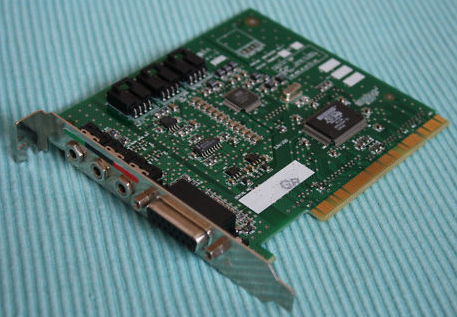Reply 80 of 171, by rfnagel
- Rank
- Oldbie
wrote:Actually there is a software synth that Creative uses with some of their cards that can load soundfonts. One product I know it's used with is the Audigy 2 Notebook because that has no MIDI hardware. (I have one of them) It works ok but you can't load really huge soundfonts (>100MB or so) with it.
Thanks for the info, I never knew that before; that CLI had a softsynth that could use soundfonts.
All of their softsynths that I'm familar with is the current one with my SBLive (that uses the ECW wavesets), as well as one that used to come with their older ISA cards "Creative WaveGuide".
IMHO it sounded pretty bad, and was originally developed by Seer Systems (based on their "Reality" softsynth engine IIRC). It came with a 5MB waveset (which in theory, should be able to reproduce some semi-decent sound), but was "dry" as a bone... no reverb or chorus effects.
Any idea of who develped the one that you're refering to? Sounds quite interesting.
Speaking of softsynths in general, I'm sure we're all familar with the Microsoft GS Wavetable SW Synth... which IMHO; puke, gag, hack, etc... 🤣!
But, just today I realized that I could apply some (or rather, A *LOT* of) SBLive EAX reverb to it (unlike the Creative SW Synth that uses the ECW wavesets, you can't use any reverb with that one at all, so's it's real "dry sounding), and the MS synth actually sounds fairly nice. Of course though, I could always load the regular GM.DLS into my SBLive (via the SoundFont control panel), which would allow the EMU to supply/generate the MIDI reverb (verses setting the WinDoZe default MIDI playback device to the MS GS softsynth), but I like twiddling with stuff <grin>.
Heh, with the SBLive reverb it sounds quite similar to the old Roland SC-55 😀
[now I'm reminiscing here]
I remember back in the day absolutely drooling over the MP3 demos that I heard from the Roland SC-88 Pro... but that was WAY out of the budget at the time. This was back when I was using my AWE32(s) with the usual 8MBGM.SF2 that I had purchased on CD.
[fast-forward to today]
Heh, with my current rig, and my latest version of my "Weeds" SoundFont and SBLive, I can give that SC-88 Pro a run for it's money <grin> 😀
(edit) 'Nuther OT ramble, copy 'n' paste from this thread -> flight sim recommendation :
-=-=-=-=-=-=-=-=-=-
Funny you should mention Falcon 3.0, as just yesterday I was fooling around with my F3 Gold CD (I have the Gold CD, as well as the floppy versions of F3/Mig-29/Hornet)... hadn't fired that one up in EONS (used to play it on my old 286).
Of F3 notable mention, the core program and flight dynamics were the same that the US military used for their full-motion F-16 simulators back in the day... they used a modified version of F3 to power the simulators.
Heh, what got me to messing around with F3 again:
I recently installed the MUNT Windows driver, and had remembered that F3 natively supported the Roland MT-32 for it's sound effects and music playback. Back in the day I (and still today) I had a Wave Blaster (1); which could be configured to simulate the MT-32 as far as the MIDI music instrument mappings.
Of course though, the WB didn't support all of the special sysex dumps that the MT-32 did, which F3 used to make the sound effects in the game sound proper with the MT-32 (jet engine sound, missle firing, target lock, etc...).
On a WB configured as an MT-32 the music sounded fine, but the sound effects were all WHACKED (strange Piano sounds for machine gun firing, weird Cello sounds for the jet engine sound effects, etc... <LOL>!). Hence, even though I had a decent wavetable daughterboard back in the day, I could NOT use it for F3... had to settle for Adlib within the game; so that the sound effects sounded proper, but the Adlib music was piss-poor (as I was used to my WB for most games' music that supported General MIDI).
Enter MUNT:
I installed the MUNT Windows driver, installed F3 Gold, and fired the game up in DOSBox... the music was great, and the MT-32 sound effects were perfect 😀 Gotta say too, the F3 soundtrack when played on an MT-32 was quite an impressive thing as well 😀
-=-=-=-=-=-=-=-=-=-
Anyhow, enough rambling <grin>...
Rich ¥Weeds¥ Nagel
http://www.richnagel.net
